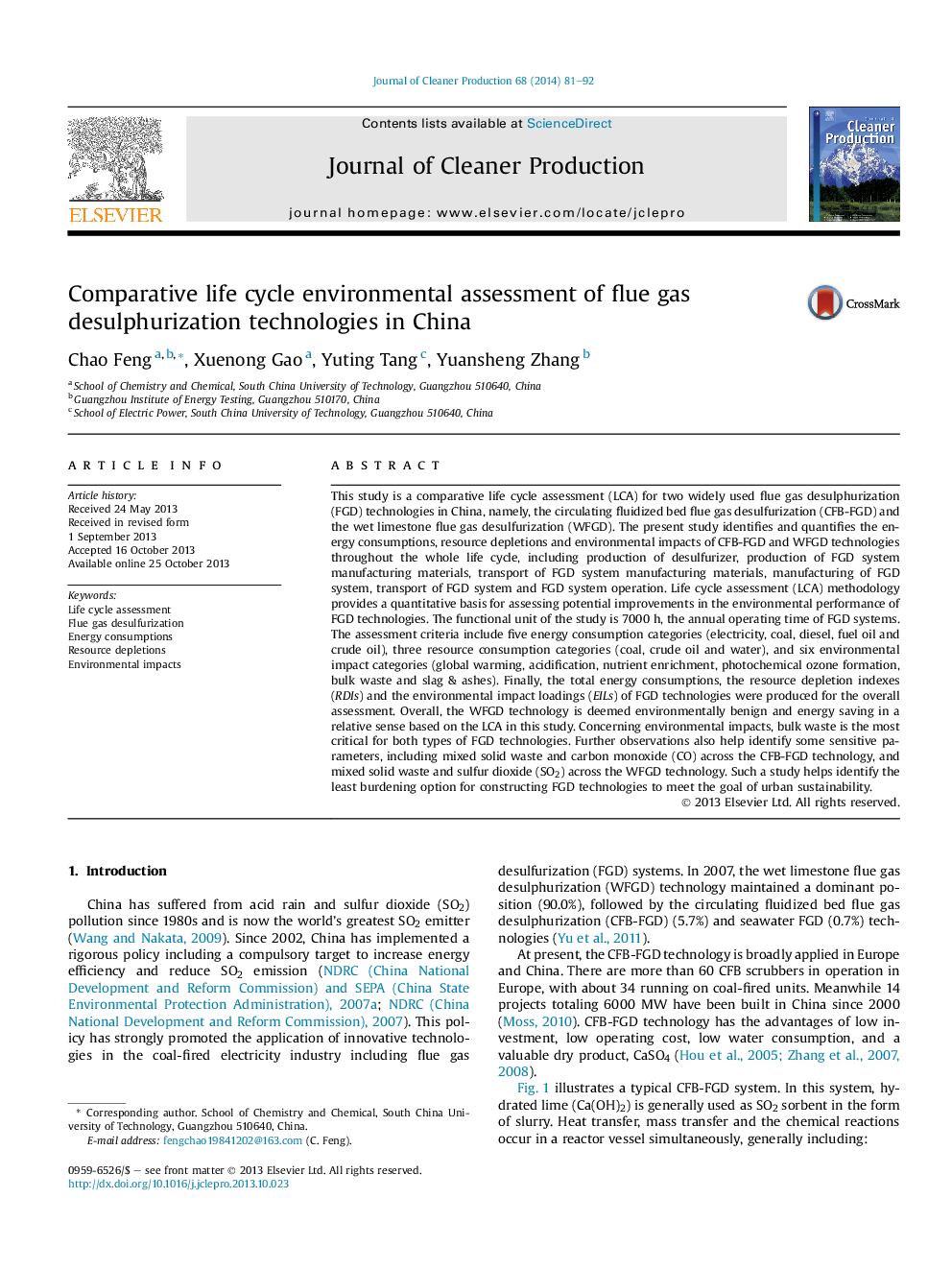| کد مقاله | کد نشریه | سال انتشار | مقاله انگلیسی | نسخه تمام متن |
|---|---|---|---|---|
| 8106668 | 1522178 | 2014 | 12 صفحه PDF | دانلود رایگان |
عنوان انگلیسی مقاله ISI
Comparative life cycle environmental assessment of flue gas desulphurization technologies in China
ترجمه فارسی عنوان
ارزیابی محیطی چرخه زندگی مقایسه تکنولوژی های سولفوریزاسیون گازوئیل در چین
دانلود مقاله + سفارش ترجمه
دانلود مقاله ISI انگلیسی
رایگان برای ایرانیان
کلمات کلیدی
ارزیابی چرخه حیات، سولفوریزاسیون گاز دودکش، مصرف انرژی، خرابی منابع، اثرات زیست محیطی،
موضوعات مرتبط
مهندسی و علوم پایه
مهندسی انرژی
انرژی های تجدید پذیر، توسعه پایدار و محیط زیست
چکیده انگلیسی
This study is a comparative life cycle assessment (LCA) for two widely used flue gas desulphurization (FGD) technologies in China, namely, the circulating fluidized bed flue gas desulfurization (CFB-FGD) and the wet limestone flue gas desulfurization (WFGD). The present study identifies and quantifies the energy consumptions, resource depletions and environmental impacts of CFB-FGD and WFGD technologies throughout the whole life cycle, including production of desulfurizer, production of FGD system manufacturing materials, transport of FGD system manufacturing materials, manufacturing of FGD system, transport of FGD system and FGD system operation. Life cycle assessment (LCA) methodology provides a quantitative basis for assessing potential improvements in the environmental performance of FGD technologies. The functional unit of the study is 7000Â h, the annual operating time of FGD systems. The assessment criteria include five energy consumption categories (electricity, coal, diesel, fuel oil and crude oil), three resource consumption categories (coal, crude oil and water), and six environmental impact categories (global warming, acidification, nutrient enrichment, photochemical ozone formation, bulk waste and slag & ashes). Finally, the total energy consumptions, the resource depletion indexes (RDIs) and the environmental impact loadings (EILs) of FGD technologies were produced for the overall assessment. Overall, the WFGD technology is deemed environmentally benign and energy saving in a relative sense based on the LCA in this study. Concerning environmental impacts, bulk waste is the most critical for both types of FGD technologies. Further observations also help identify some sensitive parameters, including mixed solid waste and carbon monoxide (CO) across the CFB-FGD technology, and mixed solid waste and sulfur dioxide (SO2) across the WFGD technology. Such a study helps identify the least burdening option for constructing FGD technologies to meet the goal of urban sustainability.
ناشر
Database: Elsevier - ScienceDirect (ساینس دایرکت)
Journal: Journal of Cleaner Production - Volume 68, 1 April 2014, Pages 81-92
Journal: Journal of Cleaner Production - Volume 68, 1 April 2014, Pages 81-92
نویسندگان
Chao Feng, Xuenong Gao, Yuting Tang, Yuansheng Zhang,
